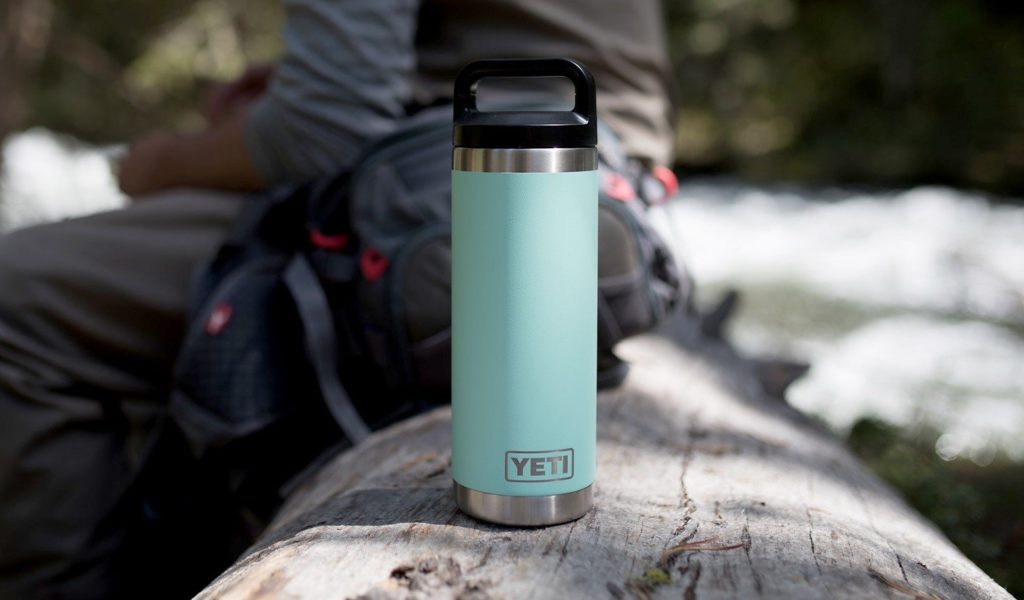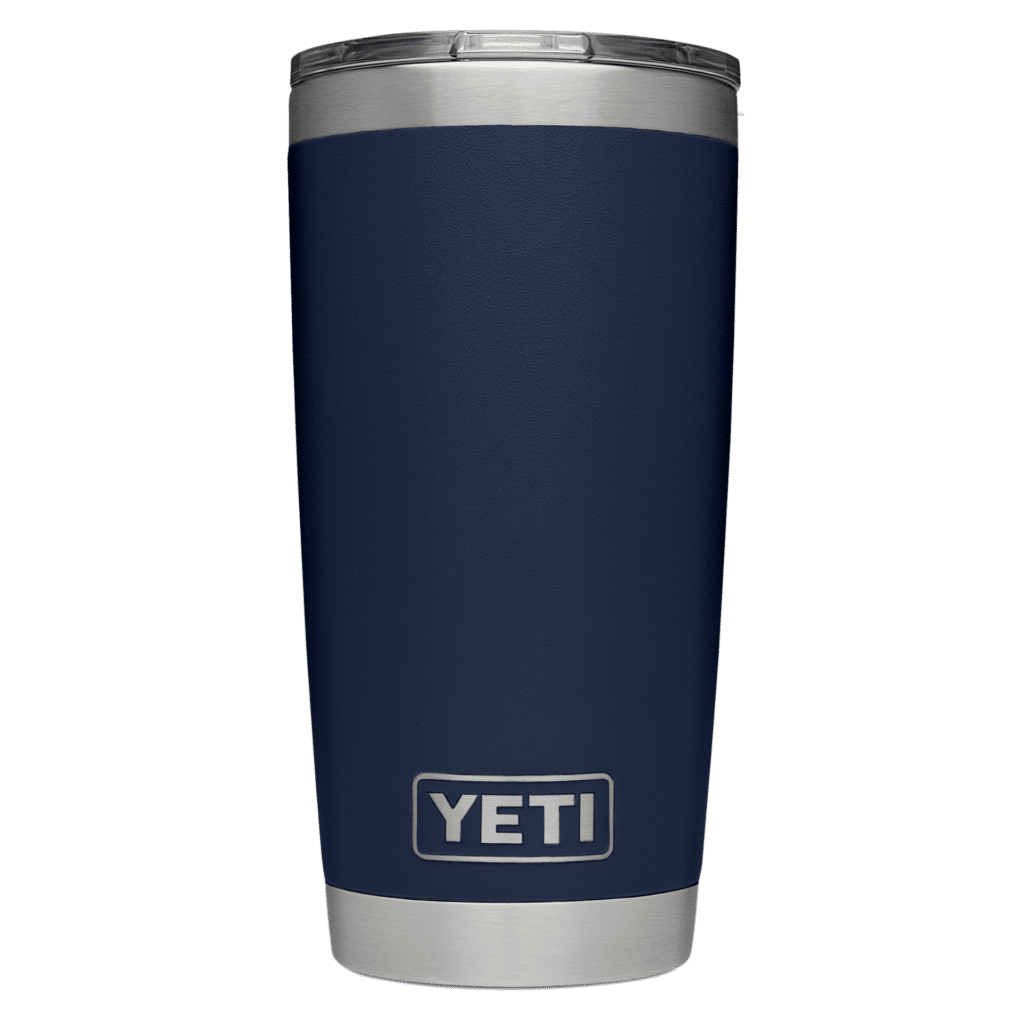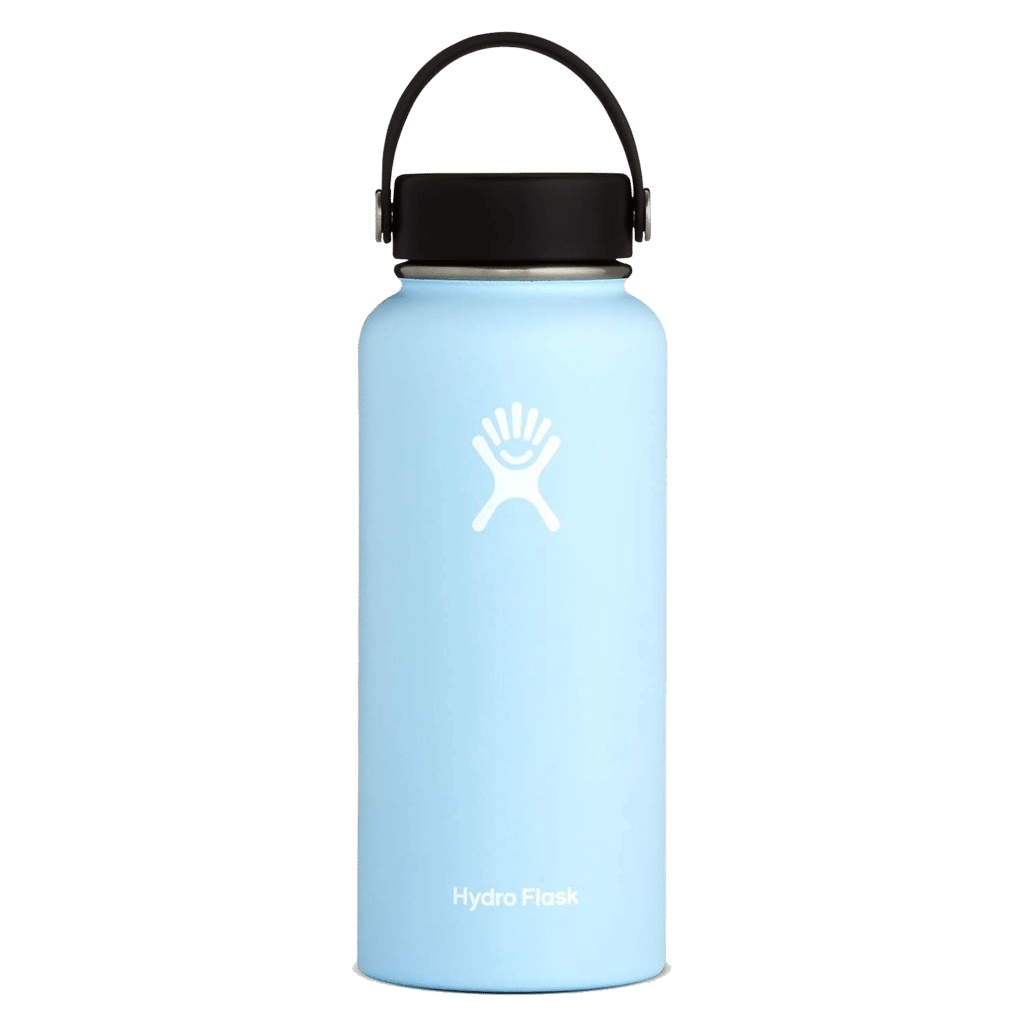Hydro Flask vs Yeti Rambler: Pros & Cons and Verdict

Hydro Flask and YETI Rambler are two of the most recognizable brands and are now considered as the elite of all water bottles in the market.
They have surpassed the standards of other popular brands like Camelbacks and Nalgene’s, and are now considered as the benchmark for what an ideal tumbler should be.
What happens if both of these water bottle behemoths are compared with each other? Will the HyroFlask’s sleek design and unique exterior coating be enough to beat the care-free build and seemingly boring design of the YETI Rambler?
Or will their bold design choice compromise the bottle’s integrity and come out inferior to YETI’s proven design concept?
Which one of these insulated bottle heavyweights would come out on the top? Let’s find out which of these two bottles is the right one for you in this in-depth review and comparison of Hydro Flask and YETI Rambler!
Table of Contents
Yeti Rambler and Hydro Flask Differences
The HydroFlask and YETI have almost the same build, just like other premium water bottle brands; both bottles are using solid stainless steel and vacuum insulation that can hold cold beverages for 24 hours, while hot beverages can last for up to 6 hours.
The build may look the same, but the attention to detail, customization, and usability are what separates both bottles apart. The other brand leans towards customization, handling, and practicality, while the other one leans towards durability and care-free usage.
Another interesting thing about this review is that both brands have a very contrasting take and implementation of heat transfer and temperature retention techniques when it comes to their design.
Standout Features of Yeti Rambler
Before we get into the comparison of all the features for both bottles, let’s look into some of the things that make the YETI Rambler stand out, and the features that set it apart from the Hydro Flask
The first thing that you’ll notice when you put both bottles together is that the YETI has a bigger bottle opening or mouth.
This will allow you to use the water bottle easier and with its 2.75 inches wide opening, the upper part of the bottle will always be positioned above the nose bridge.
It’s also not hard to notice the bulkier design of the Rambler, which often translates to better durability and overall build of the bottle.
Although this makes the YETI standout, it also requires a full handle grip, which can be disadvantageous for consumers with smaller hands.
The TripleHaul Cap Technology is a fancy way of saying “my bottle lid is better than everyone else’s lid”.
It is basically a solid lid with a built-in handle that is slightly larger than other water bottles’ handles and it lets you haul it around without worrying about spillage and heat transfer.
It does not have any special coating, which may look bland and boring, but it makes this bottle more durable and dishwasher safe.
This means that you can use the bottle without worrying about scrubbing and scrapping of the surface whenever you take it out for extreme outdoor activities.

The YETI Rambler family is tough as hell, and will keep your drinks as cold (or hot) as science allows. With 18/8 stainless steel construction, double-wall vacuum insulation, and no sweat design, they’re perfect for the deer lease, cleaning table, or just the down time in between your outdoor exploring.
Standout Features of Hydro Flask
The Hydro Flask boasts with a good set of features that sets it apart from the YETI bottle and each of these features just strengthens the brand’s reputation.
The company is very confident with the design and build of this bottle, that the Hydro Flask carries a lifetime warranty with no questions asked.
When it comes to the lip placement, Hydro Flask did it really well without compromising the reduction of heat transfer.
The bottle lid screws from the outside, so it creates what appears to be the neck of the bottle where you can place your lip while drinking. For some consumers, this is what made them pick this bottle.
It offers added protection and is more hygienic than other bottles that unscrew the lid from the inside.
The design is slimmer and those who have smaller hands will find the Hydro Flask very easy to grip. It does not have the bulky feel and looks sleek and stylish with the powder coating exterior.
This is the same coating that they say will improve the handling of the bottle and minimize accidental slips.
HydroFlask is also cheaper than YETI if we are to compare the entry price. However, it is debatable as to whether it really is a much cheaper option, because of the wide range of customization that it offers.
There are several options that you can choose from when you go for Hydro Flask such as colored and functional lids that further sets it apart from other water bottles.

Hydro Flask’s unique double wall vacuum insulation protects temperature for hours. Cold drinks stay icy cold and hot drinks stay piping hot so you can stay refreshed for any adventure.
1. Technology
Both bottles use double-wall vacuum insulation technology. This was initially introduced in 1982 and is now widely used in premium tumblers to retain the temperature of the beverages inside the container.
Double-wall insulation means that the bottle has two insulated walls that are separated by an air gap or vacuum space that serves to enhance the bottle’s temperature retention capability.
This air gap offers an added layer that ensures your beverages keep their temperature, regardless of the temperature of the outside environment.
Unlike a typical single-wall water bottle that only retains the temperature for a few hours, having double-wall insulation can keep the temperature inside the bottle for up to 24 hours!
Some may argue that this feature is overkill, but is what sets both the YETI Rambler and Hydro Flask from the rest of the water bottles in the market.
Hot beverages can keep their temperature from single-wall insulation for about 1 hour and drastically drops to lukewarm.
YETI and HydroFlask, on the other hand, claim that with double-wall insulation, hot coffee will still be hot coffee, even on freezing cold weather for 5 to 6 hours. Vacuum insulation is so efficient in regulating the temperature that your hot coffee, will still be enjoyable even after 12 hours.
2. Hot and Cold Liquid
There is no way to verify the claims of both companies when it comes to keeping the temperature of the beverage inside their container, other than to try it for ourselves.
So in order to find out which of these two heavyweights is more effective in retaining liquid temperature, we conducted several experiments.
For the first experiment, we filled both bottles with water near boiling point temperature or just the right temperature that most of the consumers prefer for their coffee.
We left both bottles, untouched and undisturbed for 4 hours to see which of these two tumblers can keep the liquid’s temperature longer.
The YETI Rambler bottle has managed to retain the temperature at 154°F, while the Hydro Flask has only retained 136°F.
Several similar tests were conducted, producing slightly varying results, but it always ends up with YETI being more effective when it comes to handling hot liquid.
Will the results be the same with cold liquid? Or more specifically in keeping ice.
The second experiment will determine if both bottles can withstand direct sunlight and still manage to keep ice-cold drinks. To start with the experience, we filled both bottles with the same amount of ice cubes and left them under direct sunlight, untouched and undisturbed, for 2 hours.

After 2 hours, we took out both bottles and drained them of water to find out which of these two is better in retaining cold temperatures. We were able to extract slightly more liquid from the HydroFlask, with a difference of only 30ml compared to the liquid extracted from YETI.
Of course, there are several factors that can affect the result of this experiment, so we conducted a few more and it yielded varying results where more liquid was drained from the YETI bottle.
With these varying results for cold temperature retention tests, we can say that both bottles have the same capability for keeping cold temperatures.
After both tests for hot and cold liquid, we have concluded that the YETI has a slight edge over Hydro Flask when it comes to retaining hot temperatures and almost equal in retaining cold temperatures.
YETI wins on this round, but it doesn’t take away the fact that both bottles perform extremely well in insulating beverages.
Ordinary water bottles put under direct sunlight for 2 hours will bring the ice cubes to lukewarm temperature, and hot beverages placed inside single-wall bottles will also be lukewarm after the same experiment.
3. Bottle Lid (Cap)
This is the part where the difference between the two bottles is most apparent. The lid is a vital part of any water bottle, as it protects the only opening of the bottle and it should be well-designed to prevent spillage and minimize heat transfer.
YETI employs a TripleHaul Cap technology and this gives it an edge over the Hydro Flask’s airtight cap. Both designs are promising airtight, spill-proof insulation.
However, the firm handle and solid build of YETI’s lid is more preferable over the flimsy strap-like handle of the Hydro Flask’s airtight cap.
YETI also has a larger handle that allows you to slip 3 fingers for a better grip, while HydroFlask, on the other hand, has a soft strap-like handle that can only be handled comfortably with only 2 fingers.
This is not a deal-breaker, but when hauling around or doing a more extreme outdoor activity, YETI Rambler is definitely a better choice.
Aside from the design and build of the lid, both bottles offer the same air-tight and antispill technology that allows the container to regulate the temperature inside the container and prevent it from being affected by the exterior temperature.
The only thing missing for both bottles is that they both have a non-closable opening. So there’s nothing to protect your beverage other than the bottle lid, which works perfectly fine.
But if you want to have a secondary lid for added protection, you will have to spend more to buy an accessory for both brands.
Despite having a more unfavorable build for the default bottle lid, Hydro Flask offers a wide range of customization options to enhance the functionality and design of the bottle; from colored lids to larger bottle opening and even a sippy-cup style.
The customization options for Hydro Flask are endless and is where the YETI falls short as it has very limited options for customizations, and mostly are novelty features like designing your water bottle.
It is also worth noting that these bottles are sold with insulated press-in lids that are specifically designed to prevent heat transfer and spills.
Both lids and even the ones that you can buy in addition to these bottles for better functionality are all dishwasher-safe.
The bottle cap is a very common issue for a lot of tumblers because cleaning it can be challenging, but the lids for these bottles are really easy to clean.
The bottle lid is arguable, but for this feature, we are leaning slightly a bit towards YETI Rambler, for having a great design and build without requiring its users to buy additional accessories.
A nicely designed default lid for Hydro Flask will definitely make it a winner because YETI is very limited when it comes to lid customization.

Hydro Flask’s unique double wall vacuum insulation protects temperature for hours. Cold drinks stay icy cold and hot drinks stay piping hot so you can stay refreshed for any adventure.
4. The Bottle Opening (Mouth)
There are 2 points of comparison for the bottle opening; the width and design.
We can say that the difference in design for both bottles is how each company perceives to be more preferable for the market without sacrificing the thermal capabilities of both bottles.
YETI Rambler has a larger opening with 2.75 inches, while the HydroFlask only has 2.28 inches. It’s not a deal-breaker, but a lot of consumers would prefer to drink from a water bottle that is well-over their nose bridge.
With 2.28 inches in width, the upper part of the Hydro Flask’s opening will always fall along your nose bridge, which may not be a pleasurable hydration experience.
Having a larger opening also lets you put larger chunks of ice and just enjoy the aroma of your beverage.
The design of the opening is also very different for both bottles. The YETI was designed in a way that the lid screws from the inside, which is totally fine, and a lot of other premium water bottles implement the same design.
But the Hydro Flask lid screws from the outside and it was designed with a protruding neck of the bottle. This gives you enough “protected” space to put your lips on while drinking, whereas the YETI doesn’t.
It’s more hygienic to be drinking from the neck of the bottle than to be drinking from the actual bottle itself that does not have any form of protection.
The lack of the protruding neck of the bottle for the YETI and the smaller opening for the Hydro Flask has something to do with the cap design.
Both brands have different approaches in preventing heat transfer from the opening of the bottle, so the better option between the two falls down on personal preference.
5. The Grip
Both brands are focused on temperature retention, which prevents them from creating contours around the bottle for better handling. But since both of these bottles use double-wall vacuum insulation, condensation on the outside is eliminated and it keeps the water bottle neat.
This no-sweat technology ensures that the temperature inside the bottle will not affect the outside temperature, preventing condensation from building up, which makes it so much easier to handle the bottle with one hand.
Hydro Flask is hands down the better choice when it comes to handle and grip. The build is slimmer, so you can just grab it with one hand. The exterior is also powder-coated, which further enhances the grip of the bottle.
The YETI Rambler is slightly bulkier and does not have any special coating that improves grip, so handling it can be a bit of a challenge.
Of course, you can always opt-in to buy additional accessories to improve your grip on these bottles, but these accessories are just for novelty and are only nice-to-haves.
The default design is what really matters, because a lot of consumers are, most likely, not keen on spending more on accessories, considering the stiff price point for these premium tumblers.

The YETI Rambler family is tough as hell, and will keep your drinks as cold (or hot) as science allows. With 18/8 stainless steel construction, double-wall vacuum insulation, and no sweat design, they’re perfect for the deer lease, cleaning table, or just the down time in between your outdoor exploring.
6. Durability and Warranty
YETI Rambler and Hydro Flask use 18/8 stainless steel, which is the most effective material available when it comes to reducing heat transfer.
This material is also what makes a water bottle indestructible and it prevents the transfer of flavor, odor, and bacteria. It can also withstand extreme usage and outdoor adventure.
Hydro Flask has a powder-coated exterior that improves its grip but this makes the bottle prone to damages just from scrubbing and scraping.
In fact, the manual for this tumbler states that you should not put this bottle in the dishwasher. This makes it more challenging to clean the HydroFlask because you will always try to avoid the coating from being chipped.
The YETI Rambler proves that it is a care-free and durable water bottle with its seemingly boring design. The plain stainless-steel design of this tumbler allows you to just toss it in the dishwasher with worrying about dents.
Although the lack of coating makes the YETI harder to grip, you don’t have to worry about scraped coating from accidental drops.
We also conducted several tests to see which of these two tumbler heavyweights can handle extreme usage and accidental drops. The YETI always comes out on top in terms of durability, usage, and drops.
However, this does not mean that Hydro Flask is the more inferior bottle between the two. It’s also very durable, and the powder coating applied was for the purpose of a better grip.
There’s also the lifetime warranty that comes with Hydro Flask. So even though they are slightly less durable than YETI, you can be sure that every HydroFlask that you own is covered for a lifetime.
We had to try this warranty for ourselves and reported twice; one for a broken cap, and the other for the compromised integrity of the bottle.
They sent out replacements as soon as possible and, more importantly, without any questions asked. YETI, on the other hand, only offers a 5-year warranty on their bottle, which makes this comparison a very close match.
7. Price
The price point will probably be the biggest deciding factor these two heavyweights, and the difference is by a huge margin. With all the features that both of these tumblers offer, the Yeti Rambler is a little cheaper, compared with the Hydro Flask.
Keep in mind though that this is the entry price for both bottles, and since Hydro Flask offers different customization options, if you want some customization and extra accessories, the price can go a little up.
Again, accessories are just for novelty and personal preference. Aside from the functional bottle lids that you can buy for Hydro Flask, most of them do not provide additional features.
As for the YETI, being good as it is without additional customization options, still is a top-notch contender for the water bottle market.
The Bottom Line
It is undeniable that both water bottles present great features and are approached from different angles, targeting very contrasting market preferences.
The other may compromise design for reduction of heat transfer, while the other preferred the better grip and overall look than care-free usage and durability.
Needless to say that both the YETI Rambler and Hydro Flask are two of the most trusted, proven and preferred brands in water bottles.
So the question as to which is better for you boils down to 3 questions. First and most important is, how much are you willing to initially pay for a premium water bottle? Second, would you go for customization options or you prefer care-free usage? Finally, are you after the design of the bottle or its overall durability?
Answering these questions will help you decide which one is better for you; the Yeti Rambler or the HydroFlask. We still side with the latter, though.

Hydro Flask’s unique double wall vacuum insulation protects temperature for hours. Cold drinks stay icy cold and hot drinks stay piping hot so you can stay refreshed for any adventure.

